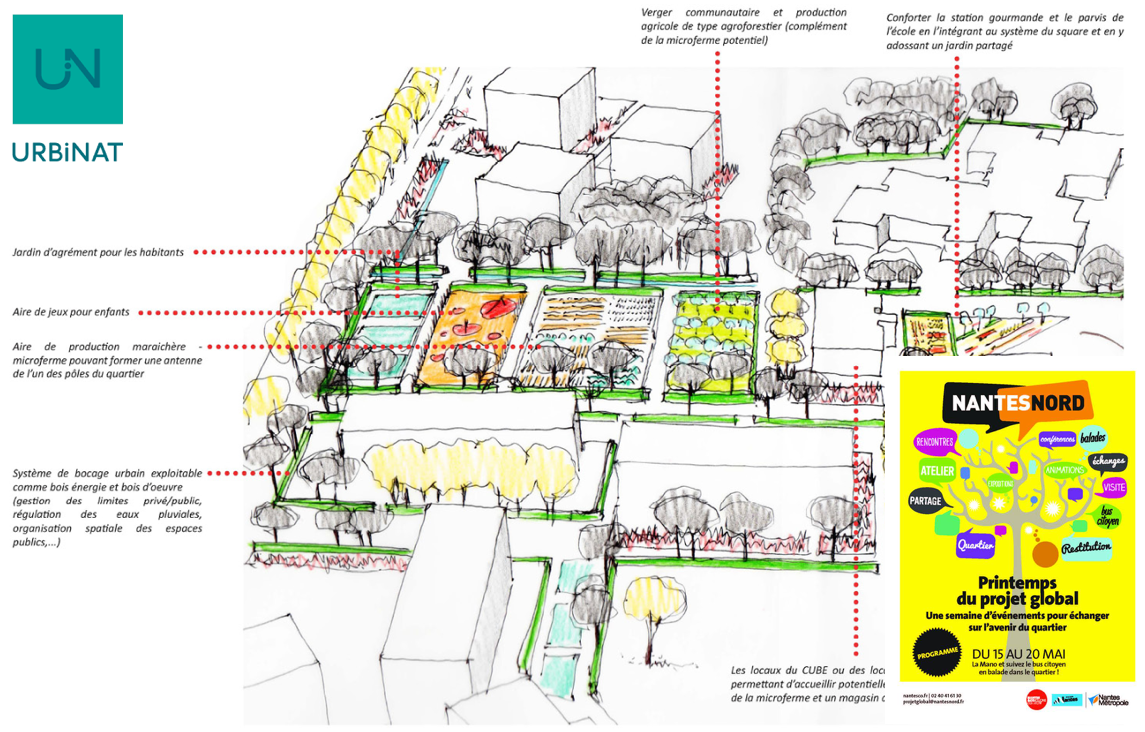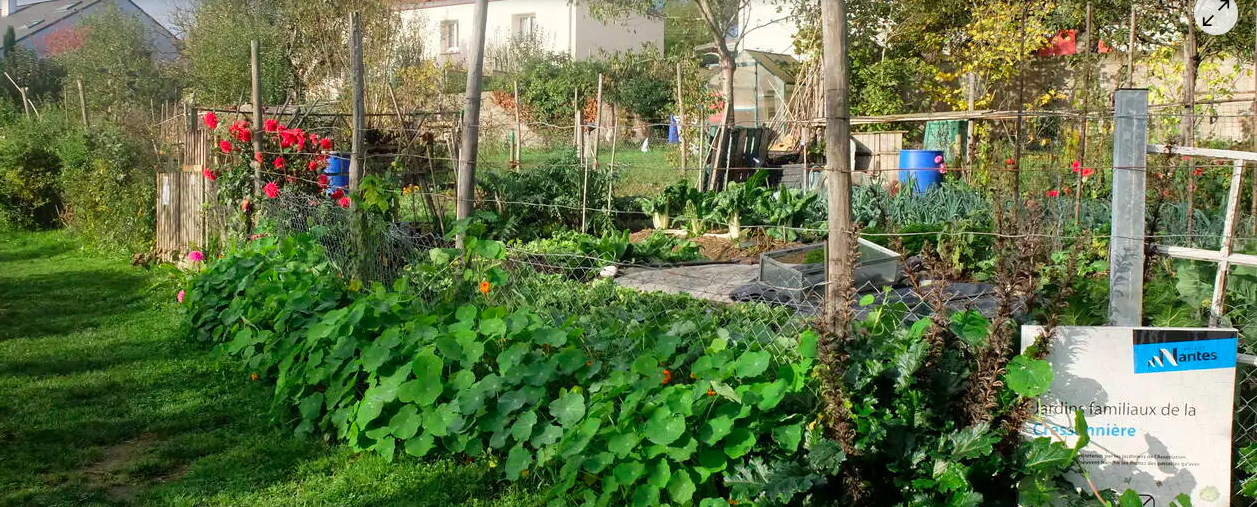Towards a rights-based approach for an inclusive urban regeneration with nature-based solutions
1. People at the centre
——- ——-
Sustainable Development Goal 11 (SDG 11) aims at making cities inclusive, safe, resilient and sustainable, and is grounded in international human rights standards. The 2030 Agenda that led to the elaboration of the SDGs is anchored in human rights since it strives to leave no one behind and puts the imperative of equality and non-discrimination at its heart. A focus that is high on the agenda is achieving gender equality and the empowerment of women and girls (SDG 5).
As highlighted by URBiNAT partner Sassia Lettoun (City of Brussels) when discussing URBiNAT’s theoretical and methodological foundations (URBiNAT deliverables D1.2 and D1.5 on the Resources Page), the SDGs offer a framework for assessing the efficiency of cities’ sustainable development plans, including in relation to rights, through participatory processes and the development of specific indicators. This requires consultations with the inhabitants of intervention areas about how their cities may be failing to take their needs into account in development plans and the effects that cities’ actions may have on their rights, as a basis for the elaboration of indicators.
Concern for how to include inhabitants in building and monitoring indicators, notably human rights indicators, is particularly relevant given the criticisms that are made of the methodological framework for monitoring and evaluation, in particular regarding the formulation of indicators. → →
That is, applying new tools, methods, and questions, as well as changing interlocutors, going beyond the usual suspects who are more inclined towards consensus building but, instead, consider instances and practices of dissensus as living indicators of what/where urgently needs to be addressed (Kaika, 2017).
URBiNAT advocates a participatory approach with the involvement of citizens at every phase, from diagnosis through to evaluation. Indeed, the co-creation model of healthy corridors being tested is based on community-driven processes to co-design and co-implement nature-based solutions (NBS). It also proposes the creation of innovative and inclusive governance models to allow active contributions from citizens, notably in terms of monitoring and evaluation of the healthy corridors, by means of local advisory boards or committees and participatory solutions tailored to the local contexts (e.g. community-based monitoring, empowerment evaluation), involving citizens and stakeholders of the project’s intervention areas.
This approach challenges the lack of direct measurements designed and implemented by people and researchers about the impacts on the living conditions of citizens and goes beyond technical-operational issues related to the quality of the project. Based on a people-centred approach, human rights and gender issues will also arise in the development of an evidence-based framework for inclusive urban regeneration with NBS.
——- ——-
2. Framework for a rights-based approach
——- ——-
URBiNAT addresses human rights and gender in the public sphere and urban space as cross-cutting dimensions which can contribute to tackling a complex combination of societal challenges in the context of urban regeneration. In that sense, a rights-based approach and gender mainstreaming may be seen as starting-point frameworks to foresee the impact of the inclusive urban regeneration advocated by URBiNAT by means of its co-creation process.
URBiNAT has established a framework for a rights-based approach, based on preliminary guiding principles, as detailed by Begoña Dorronsoro and Nathalie Nunes (CES-UC) in the context of URBiNAT’s theoretical and methodological foundations (deliverable D1.5).
A rights-based approach with special attention to gender analysis needs to be integrated into all phases of the project’s activities, from planning, formulation, and implementation, to assessment. Gender analysis includes the identification of gender inequalities, power relations between men and women, elements that support them, potential impacts specifically on women, and multiple sources of discrimination based on sex and age. → →
Activities promoting a gender perspective also involve having women among the list of stakeholders, actions to empower women, solutions to the obstacles preventing women’s full participation, as well as gender-sensitive evaluations.
Moreover, gender mainstreaming in URBiNAT involves not only addressing gender norms and stereotypes, inequalities, and unbalanced power relations between men and women but also considering non-binary persons as a result of the LGBTIQA+ struggles. It also considers the complex combination of oppressions and discriminations in an intersectional approach as experienced by racialized and minoritized peoples and communities.
Indeed, URBiNAT aims at equality and equity for all, the latter being related to the intersectional approach, trying to fully acknowledge differences and diversities. This is highlighted by CES-UC’s fellow researcher Begoña Dorronsoro (see deliverable D1.5, URBiNAT’s first report on the compilation and analysis of human rights and gender issues).
——- ——-

URBiNAT’s framework for a rights-based approach
3. Challenges in practice
——- ——-
As cross-cutting dimensions, human rights and gender cover many aspects of the project and constitute lenses to be taken into account from the analysis applied in the research and innovation contents, to the completion of all stages of activities. The guiding principles of URBiNAT’s framework for a rights-based approach converge with some ethical principles adopted in the project (see the section of URBiNAT’s website and resources related to ethics), and others with procedures adopted in the monitoring and evaluation of activities. Moreover, the disruptive context of the global health crisis related to COVID-19 increased the need to apply these lenses to an even more complex combination of societal challenges (see the series of blogpost on the challenges, responses, and solidarity that emerged with the pandemic in URBiNAT cities).
However, the complexity is not only theoretical. It is also practical. Indeed, to make these themes integral dimensions of URBiNAT, the first difficulty lies in having this always present in the planning and development of activities and involving as many partners of the consortium as possible in adopting these lenses in their internal and organizational agendas, and in their analyses and perspectives on the project’s progress and results. It may also require changes in the established procedures and cultures of partners and stakeholders, their values and practices, that is beyond formal discursive manners and visible structures, but inside the deep core of hierarchies and organizational cultures and practices, as problematized by CES-UC’s fellow researcher Begoña Dorronsoro in reference to the work of the Zambian gender consultant and feminist activist Sara Hlupekile Longwe (1997) (see deliverable D1.5). → →
Longwe problematizes the “consensus discourse which conceals the essence of the problem” (Longwe, 1997). It loops back to the concern on how to include inhabitants in building and monitoring indicators, namely human rights indicators, that is the need to consider instances and practices of dissensus as living indicators of what/where urgently needs to be addressed. However, the analysis of the impacts of projects funded by the European Union (EU) in the area of NBS has evidenced that when efforts are made to increase participation and inclusion in co-design and implementation of NBS, emphasis is often on minimising conflict and reaching consensus, as well as the need for NBS to be designed and implemented with the explicit intention of addressing the inequalities and tensions underlying urban development to fully contribute to realising sustainable communities (Bulkeley, 2020).
URBiNAT has invested considerable effort in creating spaces for citizens to participate in the co-design process, but is still challenged by the efficacy of participation to address inequalities, as much as other EU-funded projects dedicated to NBS. The EC report dedicated to review these projects, led by Harriet Bulkeley (2020), alerts to four dangers: 1) of reducing it to “working towards consensus and minimising conflict”; 2) that the participatory methods are themselves exploitative by just legitimizing solutions that provide little contribution to the needs and ambitions of the communities, 3) entrench or widen social inequality and 4) that crystalized institutional practices limit the ambitioned social cohesion effects of NBS.
——- ——-

Photomontage of screenshots from two interview videos with the citizens’ voices and dreams.
Video 1 – Documentary of the kick-off event in Campanhã, Porto, held on the 12th of October 2019. Produced by Maximilien Michaux and Fernanda Curi, November 2019.
Video 2 – Dreams of a Healthy Corridor for the district of Campanhã, Porto. Produced by Visões Úteis, June 2020.
——- ——-
As Sassia Lettoun (City of Brussels) has emphasized, putting into effect a rights-based framework requires an awareness of and the ability to manage controversies around claiming rights, participation, accountability and transparency, for example by means of a complaints mechanism. Lettoun also insists on the fact that the most important communication tool remains the behaviour of the project’s researchers, technicians and experts in the field, who must be open, accessible, responsive and transparent, “putting ourselves in the shoes of people”, which allows us to build trust.
Within URBiNAT’s co-creation process of Healthy Corridor, the co-implementation and co-monitoring of NBS pave the way for testing continuous, accessible communication and interaction, by means of co-created structures that consolidate the channels of participation in governance in combination with participatory solutions. → →
And, consequently, for applying a rights-based approach that would contribute to an inclusive urban regeneration with NBS, by mirroring also the project’s monitoring and evaluation modalities.
Indeed, the analysis of the participant’s attendance list, the narrative reports of activities and the application of self-evaluation or self-reported data by means of a survey are important sources of information when they include disaggregated data, as well as qualitative and quantitative information on the participants’ specificities. It will enable URBiNAT to assess, for example, if the Living Labs increase the diversity of participants throughout the project implementation, namely the inclusion of priority groups, under more vulnerable conditions, the engagement of citizens from URBiNAT’s neighborhoods in the decision-making processes, as well as their active participation in the political, economic, social and cultural life of their communities and city.
——- ——-

Activities with 46 children of the primary school Georges Sand around nature and environment, and more specifically around microclimate, water quality, and urban soil, on the 7th of October 2020. Picture by IRSTV.

Walkthrough with inhabitants of the Nantes Nord district on the 14th of October 2020. Picture by Nantes Métropole.
The present contents about URBiNAT’s approach to human rights and gender take into account contributions to deliverables D1.2 (Theoretical and Methodological Foundations of the Project) and D1.5 (Compilation and analysis of human rights and gender issues), namely of: Alexandra Vindfeld Hansen, Beatriz Caitana, Begoña Dorrsonsoro, Gaia Giuliani, Isabel Ferreira, Iuri Bruni, Lia Antunes, Lúcia Fernandes, Margarida Pedroso de Lima, Marie Sorivelle, Mette Skjold, Nancy Duxbury, Nanna Maj Stubbe Østergaard, Nathalie Nunes, Sandra Carvalho, Sassia Lettoun, Sheila Holz. All published resources of the URBiNAT project can be accessed via the Resources page.
The elaboration of this blog post is based on the systematization and reviews of Nathalie Nunes, Beatriz Caitana, Lúcia Fernandes, and Tom MacKenzie.
References
Bulkeley, H. (2020). Nature-based Solutions: Towards sustainable communities. In T. Wild, T. Freitas, & S. Vandewoestijne (Eds.), Nature-based Solutions—State of the Art of EU-funded Projects (pp. 156–180). Publications Office.
Kaika, M. (2017). ‘Don’t call me resilient again!’: The New Urban Agenda as immunology … or … what happens when communities refuse to be vaccinated with ‘smart cities’ and indicators. Environment and Urbanization, 29(1), 89–102.
Longwe, S. H. (1997). The evaporation of gender policies in the patriarchal cooking pot. Development in Practice, 7(2), 148–156.




